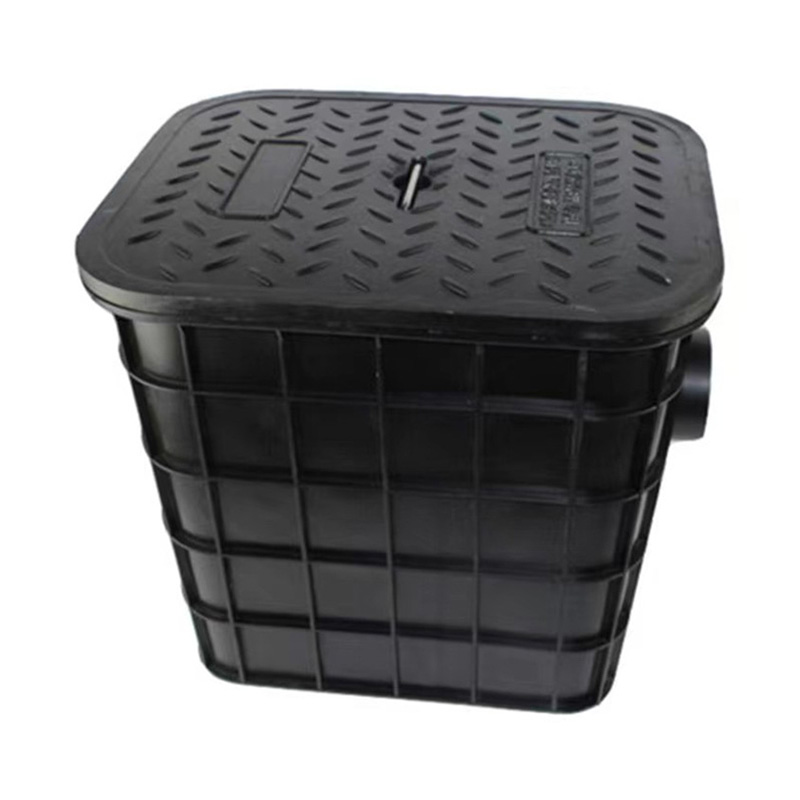PE Plastic Water Sealing Well Oil Well Isolation Grating
Cat: Separated Oil Well
The PE plastic water seal well grease trap with grating is an exceptional wastewater treatment. Crafted from durable polyethylene, it offers pred...
See DetailsIn many industries, properly managing oil-contaminated water is a routine yet essential task. From automotive workshops to food processing facilities, ensuring that oil is safely separated from water helps protect the environment and keep operations running smoothly. A reliable plastic oil water separator plays an important role in this process.
Understanding the different parts of a plastic oil water separator helps users maintain their systems more effectively and select the right equipment for specific applications. Here are the essential components you’ll find in many standard models:
The inlet section is where the contaminated water enters the plastic oil water separator. This part is designed to control the flow of incoming water, slowing it down to help reduce turbulence. By minimizing agitation, it ensures that the oil begins to separate naturally from the water as it moves through the unit.
At the heart of every oil-water separator is the separation chamber. This large, open space allows oil to rise to the surface while heavier water settles at the bottom. In some designs, baffles or flow control plates are installed within this chamber to guide the movement of liquids and improve separation efficiency.
Many modern plastic oil water separators feature coalescing media, which are structured materials like plastic plates or mesh packs placed inside the separation chamber. These materials encourage smaller oil droplets to come together (coalesce) into larger ones, making it easier for them to rise to the surface and separate from the water.
As oil accumulates on the surface within the separation chamber, it moves toward the oil collection area. This section of the plastic oil water separator is designed to trap and store oil safely until it can be removed manually or through an automatic system. Keeping the oil contained prevents it from mixing back into the clean water stream.
Once the water has passed through the separation process, it flows toward the clean water outlet. This outlet ensures that only water free of oil leaves the plastic oil water separator. Some systems may include an additional filtration or polishing stage at this point to further improve water quality.
Every plastic oil water separator comes with access covers or inspection ports. These allow operators to check the oil and water levels, perform routine maintenance, and clean internal components as needed. Easy access is essential for keeping the separator working efficiently over time.
In some applications, a ventilation port is included to safely release gases that may build up within the plastic oil water separator during operation. Proper venting helps maintain system safety and prevents pressure-related issues.
Familiarity with the components of a plastic oil water separator is valuable for several reasons. It allows users to perform regular inspections and maintenance more effectively, reducing the risk of operational downtime. Second, it helps businesses choose the right model by comparing different designs and features based on their specific needs. Lastly, understanding how each part works together improves overall system efficiency and extends the lifespan of the equipment.
The plastic oil water separator may appear simple from the outside, but it’s made up of several carefully designed components that work together to separate oil from water effectively. From the inlet section to the clean water outlet, each part has a specific role that contributes to the unit’s performance and reliability.
By understanding these basic components, operators and facility managers can better care for their equipment, select suitable models for new projects, and ensure their operations remain compliant with environmental regulations. In today’s industries, where waste management and sustainability are top concerns, the plastic oil water separator continues to be an essential and practical tool for safe and efficient oil-water separation.

It would be great to hear from you!